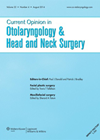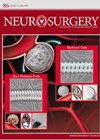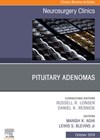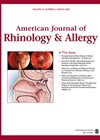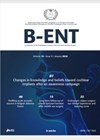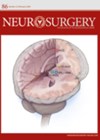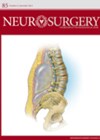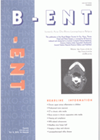
Journal Reviews
Do we need contrast MRI when screening for vestibular schwannoma?
Gadolinium contrast enhanced T1-weighted (gT1w) MRI images of the internal acoustic meati have long been considered the gold standard in the diagnosis of vestibular schwannoma (VS). However, the addition of contrast to the MRI examination increases the cost and time...
Gender inequality across medical specialties in the United States
The authors of this study collected and evaluated 4222 surveys of patient satisfaction ratings of male and female residents across subspecialties in the United States. Half of the evaluated residents were females, with first and second year residents being evaluated...
Preoperative prediction of pain outcomes in patients with trigeminal neuralgia
The authors of this retrospective study have developed a preoperative trigeminal neuralgia (TN) grading system for the preoperative prediction of long-term pain relief after microvascular decompression (MVD). Patients who had become refractory to or developed toxicity to carbamazepine or oxycarbamazepine...
Prolactinomas: when to operate
Prolactinomas are the most common functional pituitary adenomas, comprising 40% of all pituitary adenomas. There are consensus guidelines and several common management pathways. This article discusses the role of surgery for these patients. Following diagnosis, the goals of treatment are...
How to manage the concha bullosa in FESS
It is an interesting concept to assess how much impact the presence of a large concha bullosa (CB) has on both severity of chronic rhinosinusitis (CRS) and also postoperative outcomes after FESS. The authors accept that the paper has limitations...
A classification of a new cell - the retrosphenoid cell
This is a concise paper which describes a previously undefined type of cell within the sphenoethmoidal complex. It identifies the retrosphenoid cell, differentiated from an Onodi cell by being entirely within the posterior wall of the sphenoid sinus, lying between...
Herpes zoster and SSNHL
Some studies suggest that viral infections may increase the risk of a sudden sensorineural hearing loss (SSNHL). The described longitudinal study explored whether herpes zoster may be a factor that increases the risk of SSNHL. Medical history in reference to...
Endoscopic stapes surgery
This retrospective Turkish study looked at the audiological and surgical outcomes of 40 patients who underwent endoscopic stapes surgery over a three-year period. To assess the learning curve, the patients were divided into two groups based on the date of...
Reasons for attending annual hearing aid review appointments
The aim of this study was to investigate what factors influence hearing aid users’ decision to attend or not attend an annual hearing aid review (HAR) appointment. Two separate surveys were created for attendees and non-attendees. An invitation letter was...
Is there a need for magnetic resonance imaging six-month post-radiosurgery for vestibular schwannoma?
With advances in imaging and radiation technologies, small, slowly growing vestibular schwannomas (VS) are treated primarily with either observation or stereotactic radiosurgery (SRS). Routine magnetic resonance (MRI) scans with gadolinium are obtained six months and one year after SRS in...
Treatment outcomes and dose rate effects following gamma knife stereotactic radiosurgery for vestibular schwannomas
Gamma knife radiosurgery (GKRS) is one of the definitive stereotactic radiotherapy treatment modalities for vestibular schwannoma (VS) management. Its efficacy depends on the cobalt-60 source which has a half-life of 5.26 years. According to the study authors, the actual rate...
Inverted papilloma
This Croatian study aimed to look at risk factors associated with malignant transformation and recurrence in 91 cases in a single institution over a 20-year period. There were 66 men and 25 women included in the study. The authors reported...

